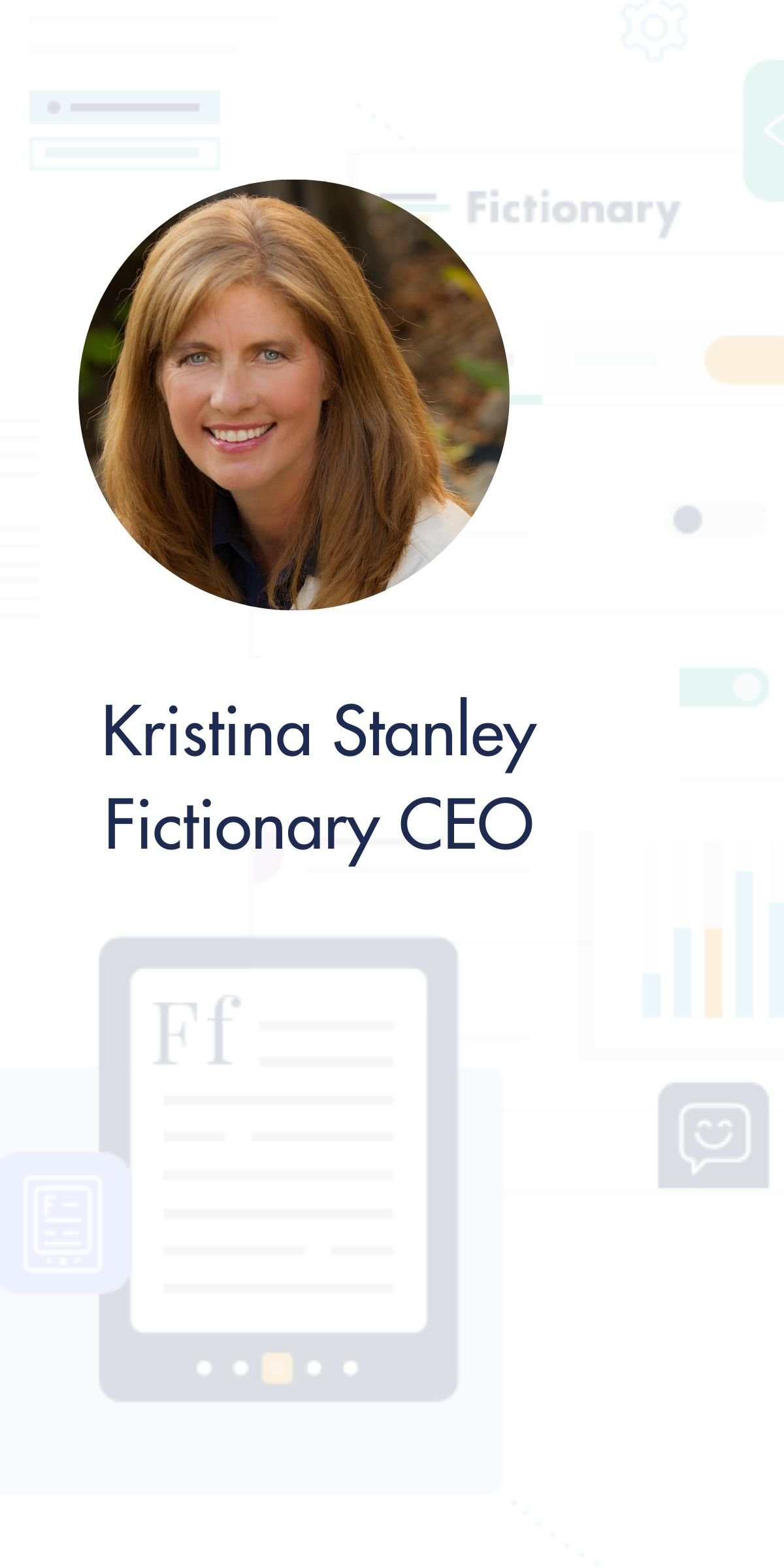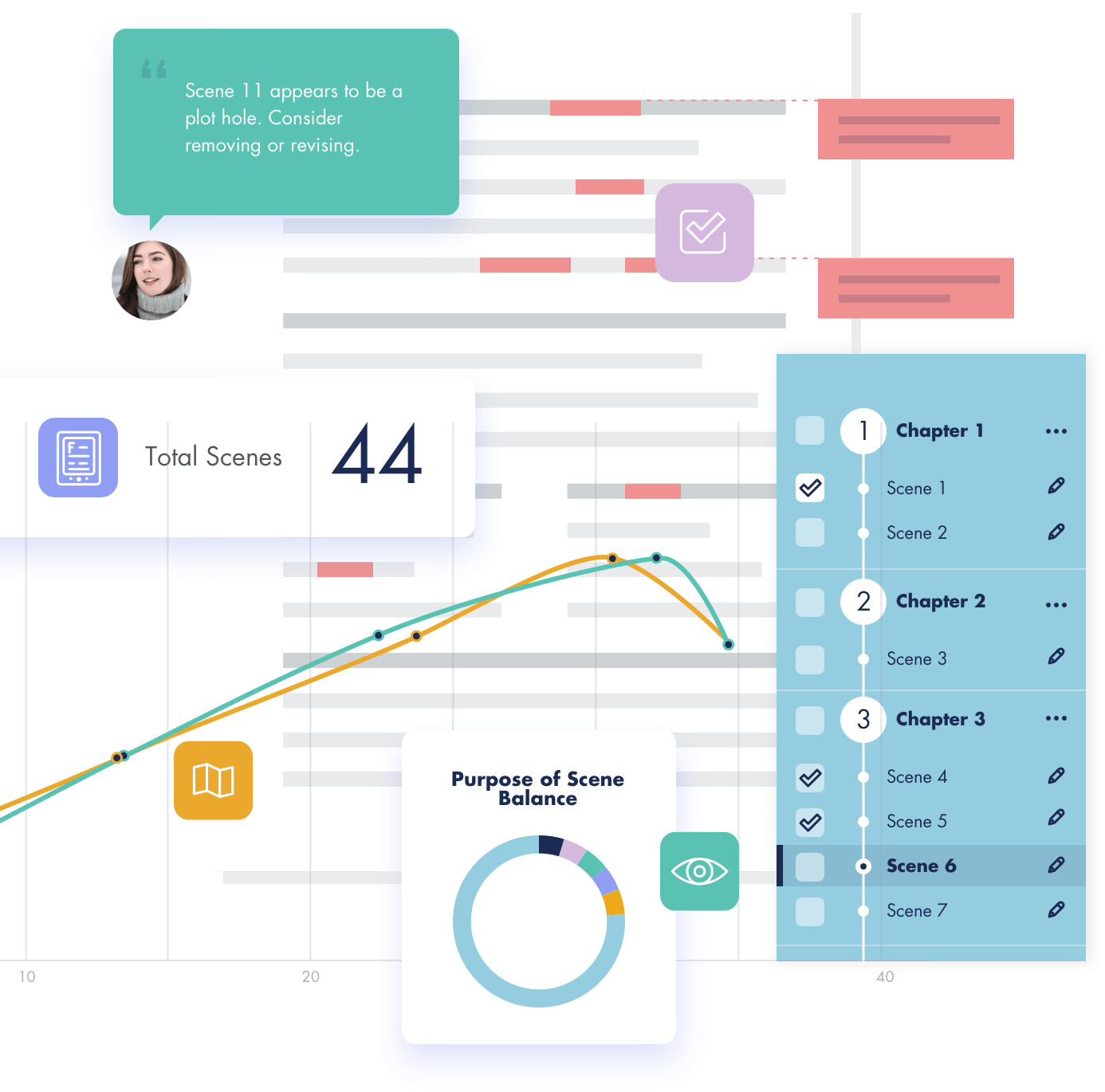
Story Element #10
How do you Pace a Story?
Check your scene and determine if the characters in the scene are in motion. If the characters are not in motion, rewrite the scene with motion to increase pacing.
This video teaches you how to use motion in a scene and shows you revision techniques to pace your story and keep your readers glued to the page.
Next Story Element: Scene Name
![]()
Rather read than watch?
Video Transcript
Kristina:
Hi, JoEllen. Great to be here again this week.
JoEllen:
Excited we’re bringing to a close all of our different elements that wrap up the character section. And we’ve been talking about point of view and the knowledge and if they have failures and how it all contributes to the overall creation of the story and the strength of keeping your readers involved.
This week, we’re going to talk about motion and characters in motion. So I’m gonna let you introduce that and tell us a little bit about how important that is.
Kristina:
Okay. So this is actually one of my favorite elements, partly because I learned it early in my writing career, and it was such a delight to learn because it gave me a real way to work on my pacing, which I often found hard to work on that. How do you increase pacing? How do you slow down pacing?
![]()
Kristina:
Hi, JoEllen. Great to be here again this week.
JoEllen:
Excited we’re bringing to a close all of our different elements that wrap up the character section. And we’ve been talking about point of view and the knowledge and if they have failures and how it all contributes to the overall creation of the story and the strength of keeping your readers involved.
This week, we’re going to talk about motion and characters in motion. So I’m gonna let you introduce that and tell us a little bit about how important that is.
Kristina:
Okay. So this is actually one of my favorite elements, partly because I learned it early in my writing career, and it was such a delight to learn because it gave me a real way to work on my pacing, which I often found hard to work on that. How do you increase pacing? How do you slow down pacing?
How do you pace a story?
Kristina:
And so this one really helps you do that. So what I mean by is the, are the characters in motion is that they have to be doing something physically in a scene. So if you have two characters talking, it’s called the talking heads syndrome and the reader can’t visualize where they are, what they’re doing, what’s happening around the characters that keeps the scene active.
So if we’re looking at a play and two people are just standing there, blah, blah, blah, blah, blah, blah, nobody really cares. There’s nothing. Right. But all of a sudden there’s props around them and they’re moving around the stage and you’re looking and you’re watching and it becomes interesting.
This is what I mean by characters in motion. So we have the characters, emotion it’s super important.
JoEllen:
And so when we’re using this, how do we use this? How do we get this involved? How do we apply this today?

![]()
How do you use motion to increase pacing?
Kristina:
Okay. So, you know, it’s me and I’m going to go back to you’re reviewing every scene. And of course you’re keeping a list. So I’m going to give it a little example first, before I give you the actual action on how to do this.
But you know, if you increase tension in a scene, you’re going to increase the pacing. So, and you’re also going to increase the pacing because people are moving. And so it feels active, right?
3. Pacing Example
Let’s say the example I have is a wife is telling her husband something that’s really important to her and she wants his full attention. Okay. And so if he sits there, nicely nodding and listening and saying, and I hear you and okay, that’s nice. She said what she has to say, but so what? What if all he’s doing while she’s talking is walking around the room and he’s tidying it up.
So he’s not looking at her. He’s doing other stuff. And then the kettle’s boiling. It takes the kettle off the stove. And then he gives the dog a treat. And so every movement is making her a little bit more annoyed and she’s getting angry and her temper starting to rise because she’s getting agitated that I have something really important to tell you, and I want you to hear me.
And he gets the kettle, Oh, look here. The dog needs a treat. And he’s focused. His movements doesn’t even have to be saying anything, but his movements are focused on other things. And so now she’s frustrated, there’s emotion in the scene and the reader’s going, come on, just listen to her. You know, you’re dude, you’re in trouble here. Listen. And so just adding the motion, gives this scene a faster pace and it adds tension to it right now.
![]()
Can there be too much motion?
Kristina:
Yes, you can. For sure. Because then it’s just overwhelming. Right? And if all the reader starts doing is looking at the motion and they can’t remember what the conversation is about. And that’s where an editor comes in is to tell the writer, look, this great scene. You have all this tension right here.
If you trimmed out some of these movements and especially boring movements, flip my hair, shrug my shoulder. You know? So it doesn’t matter unless I’m flipping my hair. Because I want your attention. But if I, if I’m not doing it for a reason, that’s related to the scene, it’s kind of irrelevant. And the other thing is motion. That’s called, uh, it’s of course now I’ve forgotten the word, but in when you’re doing a screenplay and you’re giving direction, stage directions of what your left hand on the coffee cup puts your right hand on your hair. [ What Kristina meant to say was stage directions]
That’s boring. When you’re reading it, you don’t need left-hand right-hand you know, she ran her fingers through her hair is enough. Instead of saying she ran her right-hand fingers through her hair too much. And so even when you’re using motion, you got to be careful how much you’re describing that motion. And is it relevant to the actual scene or not?

How do you pace a story?
JoEllen:
Right, right. That’s great. So how are we going to put this to some hardcore advice for today? So our writers have something to go back and do with their people. I know we’re looking at it, right? Notes. Walk us through it.
Kristina:
Yep. Okay. So here and you can do this while you’re doing the other elements. You don’t have to do every story element separately, because quite often you’ll see them all at the same time and, and fill them out at the same time.
So I’m not suggesting you have to read your stories 38 times for each element, but you have an organized way of looking at these while you’re editing, then you can do them. And for this element, I recommend you just ask. Are they in motion? Yes or no. And that’s it when you’re reading through it. So when you’re doing your revising, you look at the scenes where you said no, and then you figure out how am I going to put them in motion and add that into the scene.
And you look at the scenes where you said yes, and make sure that every motion is driving the story forward. Is it adding tension? Is it adding conflict? What’s it doing for the story? And then, you know, should I keep it there or should I cut it?
JoEllen:
Right, right. I mean, it’s always back to the notes, always back to the revisions and revise, revise, revise, rewrite, rewrite. And keep going. And it never ends until you’re that’s right. That’s right. And that’s a great place to end on the character elements is that you are doing this to come up with a powerful story and it’s totally, totally worth it.
And everybody with a process is capable of doing it is something you can learn. It’s a talent, you can develop it just a little bit of hard work and focus, right. And again, it comes back to this. When you’re working with an editor, you are getting help through it the first time, which helps you. But also you’re learning so much. So it helps your your sequels go along much easier and much quicker. They’re more painless.
Shall we say, as you write them because you’re, you are creating your craft and it does help you overall. So again, um, this is fantastic. We have done a full review of all the characters on our 38 fiction writing elements. So again, we invite you to come back and we’ll be covering the plots and scenes as we go through that next. So we look forward to seeing you again next week. Thank you, Kristina.


